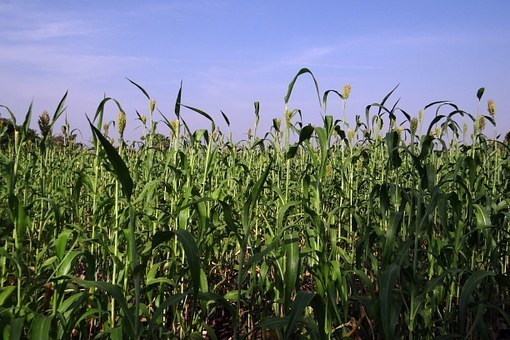
Prussic Acid in Livestock Feed Myths vs. Facts
Here at Ward Laboratories, INC. we have recently updated our fee schedule and website. One major change in the fee schedule is that we are asking clients to call and visit with our Professional Animal Scientist prior to sending samples to be analyzed for Prussic Acid in livestock feed. We have heard some of the myths about the toxic gas. Here we will debunk them with the facts.
Briefly, lets summarize from our previous post: Prussic Acid and Nitrates in Sorghum and Sudan Grasses: Proper Sampling for Grazing Animals. The compound hydrogen cyanide (HCN) is present in the leaves of specific plant species. These plant species are commonly sorghum species, johnsongrass, clover, vetch and choke cherry. The deadly compound is released when the plant cell wall is damaged. Ruminant species are more prone to Prussic Acid Poisoning. More HCN accumulates in stressed plants and in plant regrowth after a frost.
Myth #1 Prussic Acid in very tightly bound hay bales
False! Once hay is cut, it dries. Through this process, the HCN escapes the damaged cell walls. The concentration of HCN can decrease as much as 75% through the haying process. Therefore, no matter how tight the hay bale, Prussic Acid is not a concern in hay.
Myth #2 Prussic Acid in Livestock Feed that is Ensiled
Sometimes! While the ensiling process can breakdown some of the HCN present in the feed, a well sealed and tightly packed silage pile can have high levels of Prussic Acid. However, silage is generally safe to feed. The majority of the poisonous gas is released when the silage is moved for feeding. If the silage is being directly fed out of the pile without mixing, or a lot of moving. We do not recommend that most silage be analyzed for Prussic Acid. If you think you have a special circumstance please consult with us prior to sending the sample.
Myth #3 Prussic Acid in Standing Forages.
Absolutely! Yes, Prussic Acid is at it’s highest concentrations in standing forages. So how do you know when to test and how? HCN levels are higher in stressed plants. If a Prussic Acid accumulating species showing symptoms of stress or stunted growth due to drought, flooding, hail, or other factors we recommend analysis. Regrowth after a frost is also likely to be higher in HCN concentration. Therefore, we recommend analysis on regrowth before grazing as well. Prussic Acid accumulates in the leaves of the plant not the stock. Animals selectively consume the leaves first, putting them further at risk of Prussic Acid Poisoning. Before turning animals into a field for grazing, go through the field and take one leave from 20 plants. carefully fold the leaves, avoid damaging them and place them in a gallon ziplock bag. Call ahead and overnight those samples to Ward Laboratories, INC.
Prussic Acid in livestock feed isn’t something we need to be constantly concerned about. However, it should be kept top of mind especially when fall grazing sorghum-sudan regrowth. While it is something that rarely is an issue and does not need to be routinely tested, the consequences of not being diligent can be deadly!
